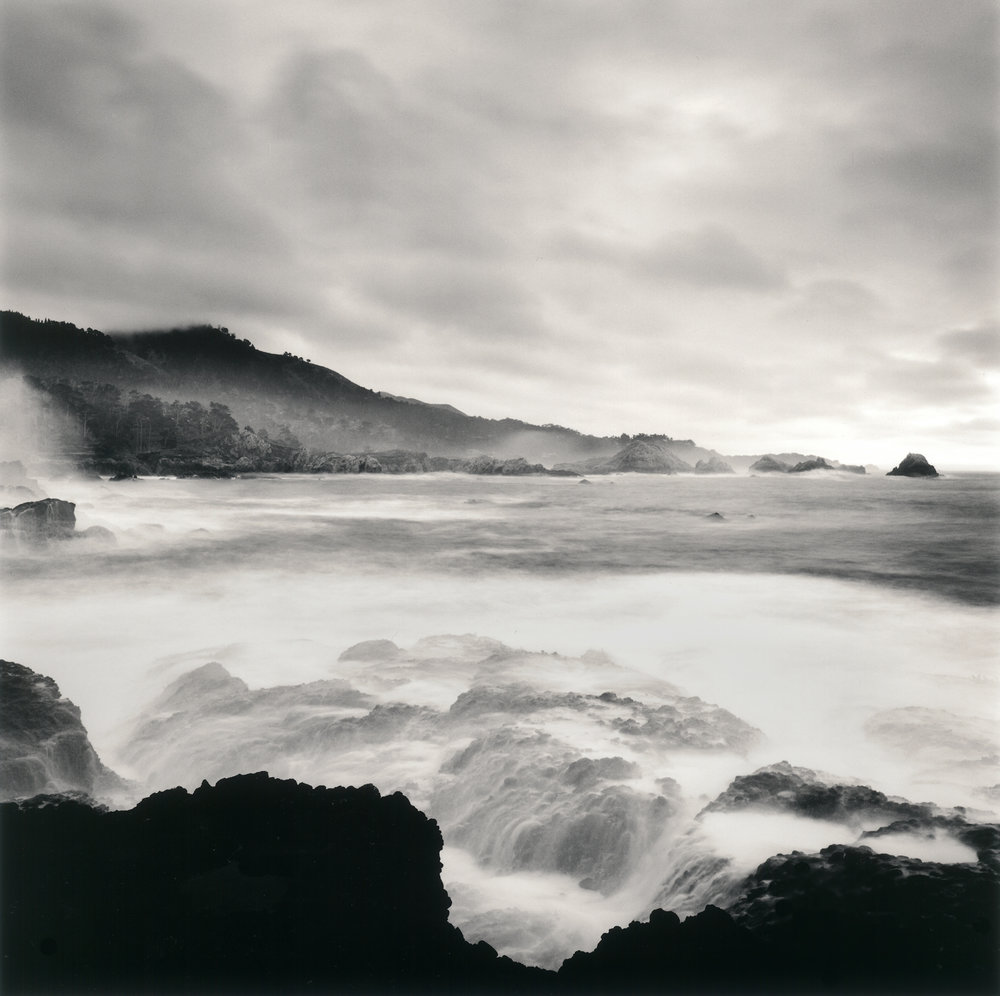Rolfe Horn
(AMERICAN, b. 1971)
Rolfe Horn's fascination with photography began as a child when he used his father’s camera to capture memories of hikes around the trails of the East Bay and Lake Tahoe. His passion for photography blossomed in high school when he enrolled in his first photography class. Within a couple of months, he constructed a darkroom in his father’s workshop, where he spent much of his free time. This passion earned him several first place awards for images of Yosemite Valley and the Mt. Diablo area. His high school graduation honors include Awards for Excellence in photography.
Rolfe received his Associate of Arts degree from Diablo Valley College in 1993. During his years as a student, he worked as an assistant to a commercial photographer, where he learned a great deal about the zone system, as well as printing techniques.
Rolfe studied landscape photography with Mark Citret, an associate of Ansel Adams, prior to entering Brooks Institute of Photography, in Santa Barbara, California, in 1993. While a student at Brooks Institute, he studied with Nick Dekker, who introduced him to alternative processes and pushed him to create powerful images. He received multiple awards for his black and white photographs of the California landscape and recognition for pioneering interactive digital photography. When Rolfe received his Bachelor of Arts degree from Brooks Institute in the fall of 1996, he was named as the most outstanding graduate of his class and presented with a plaque in recognition of his accumulated achievements in landscape and digital photography.
After graduation, Rolfe moved to the Bay Area, where he continued his love for landscape photography while pursuing a career in digital interactive photography. He began to study the surrealistic nature of the land, searching out abstract forms or working at night, as he had done when he was a teenager.
In 1998 Rolfe decided to give up commercial photography in order to assist Michael Kenna. Working for Kenna allowed Rolfe to concentrate all his efforts in the fine arts. During the three years assisting, Rolfe created new work, found gallery representation and eventually was able “retire” from assisting in 2001.
Rolfe continues to live and work as an artist and photographer in the San Francisco Bay Area. His photographs have been in numerous exhibitions in the United States, Europe, and Asia, as well as widely published in magazines and in several books, including three monographs.
ARTIST STATEMENT
The landscape has always attracted me on many levels. I am somewhat of a loner, so the quiet, meditative nature of sauntering about and searching for something in the land which “speaks” to me is appealing. The curiosity of “what is around the next bend” keeps me wanting to explore farther down the path. The opportunity to capture and share the vistas I have experienced is also extremely gratifying.
Human vision can only detect individual moments, so by photographing with long exposures, during twilight or night time, I am able to capture a series of moments on a single piece of film, effectively creating a static image by compressing time, which moves the photograph toward the sublime. The movement of water will blur, clouds can streak, stars trace their arcs and falling rain creates a unique atmosphere. The resulting photograph has more of an elastic feeling, as if time were stretched and then snapped back into a single instant.
The power of a photograph comes from its ability to record reality. However, with the advent of digital imaging, this power is completely diminished as the computer can convincingly reproduce “the cow jumping over the moon”. This is why I only use traditional methods for my work. Each print is handmade by passing light through a negative in an enlarger onto photographic paper in a darkroom. The image one sees actually happened in reality. There is no digital trickery; my photographs maintain their original integrity of witnessing truth.
I continue to reflect what it is that makes me stop at a given place to take a photograph. A scene must contain visual harmony and something unique that gives me pause. There is a collision of light, subject and emotion which eventually culminates into an exposed piece of film, ultimately living on in the gelatin silver of a photographic print.
I hope you enjoy looking at the landscape as I interpret it.









